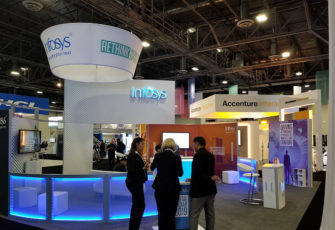
When planning an event, choosing the right stage layout is crucial. The stage layout can significantly impact audience engagement, visibility, and overall event success. Understanding the different types of stage layouts and their implications can help you make an informed decision for your next event.
Proscenium Stage
The proscenium stage is one of the most traditional and widely used layouts. It features a large, framed opening through which the audience views the performance.
This layout creates a clear separation between the performers and the audience, making it ideal for theatrical productions, presentations, and corporate events & live experiences.
The proscenium stage allows for elaborate stage & exhibit production, including complex set designs and extensive use of interactive media dev & design. However, it may limit audience interaction and engagement compared to more immersive layouts.
Thrust Stage
A thrust stage extends into the audience, with seating on three sides. This layout creates a more intimate setting, allowing the audience to feel closer to the performance.
Thrust stages are perfect for events that require a strong connection between the performers and the audience, such as live music shows, fashion shows, and interactive theater productions.
The increased audience proximity enhances visibility and engagement, making it a popular choice for many event planners.
In-the-Round Stage
An in-the-round stage is surrounded by the audience on all sides. This layout offers a unique and immersive experience, as it eliminates the traditional "front" of the stage.
In-the-round stages are often used for concerts, circus performances, and interactive events where audience engagement is paramount. The lack of a defined front can pose challenges for stage & exhibit production, requiring creative solutions for set design and staging.
However, 360-degree visibility and engagement can significantly enhance the overall event experience.
End Stage
The end stage is similar to the proscenium stage but without the framed opening. It is a simple, versatile layout with the audience seated directly in front of the stage. This layout is commonly used for concerts, presentations, and corporate events & live experiences.
The end-stage allows for straightforward stage & exhibit production and can accommodate a variety of interactive media dev & design elements. Its simplicity and versatility make it a reliable choice for many types of events.
Traverse Stage
A traverse stage, also known as an alley or corridor stage, has the audience seated on two opposite sides, facing each other with the stage running between them. This layout is ideal for fashion shows, catwalks, and events that require a linear performance space.
The traverse stage offers excellent visibility for all audience members and can create a dynamic and engaging event atmosphere. However, it may limit the depth and complexity of set designs compared to other layouts.
Flexible Stage
A flexible stage, or black box theater, is a versatile space where the stage and seating can be rearranged to suit the event's needs. This layout is ideal for experimental performances, workshops, and events that require adaptable staging solutions.
The flexibility allows for innovative stage & exhibit production and extensive use of interactive media dev & design elements. However, it requires careful planning and coordination to ensure a seamless event experience.
At Multi Image Group, we specialize in creating exceptional event experiences with our expertise in stage & exhibit production and interactive media dev & design. Contact us to discuss how we can help you choose the perfect stage layout for your next event.



